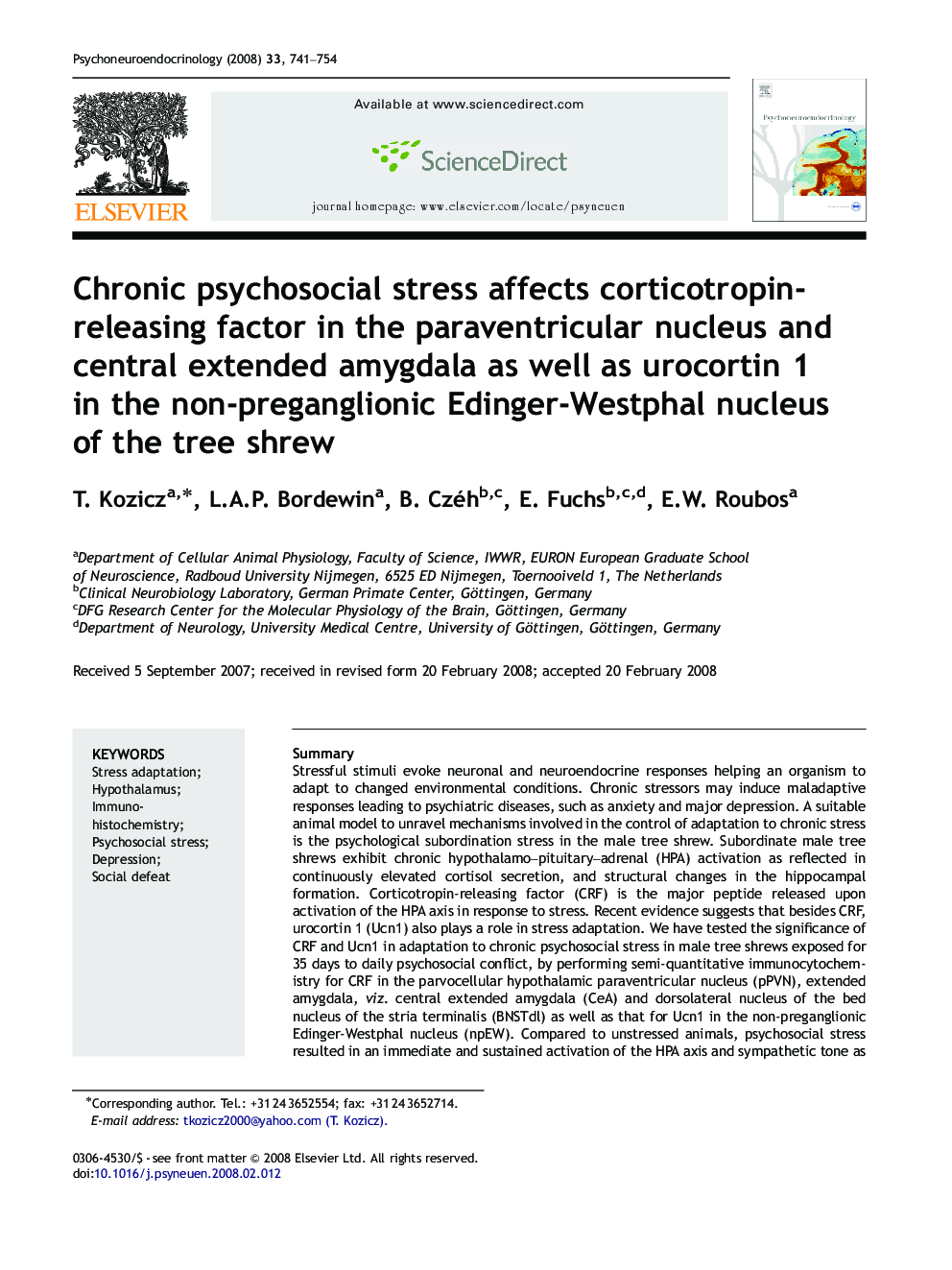| کد مقاله | کد نشریه | سال انتشار | مقاله انگلیسی | نسخه تمام متن |
|---|---|---|---|---|
| 336786 | 547213 | 2008 | 14 صفحه PDF | دانلود رایگان |

SummaryStressful stimuli evoke neuronal and neuroendocrine responses helping an organism to adapt to changed environmental conditions. Chronic stressors may induce maladaptive responses leading to psychiatric diseases, such as anxiety and major depression. A suitable animal model to unravel mechanisms involved in the control of adaptation to chronic stress is the psychological subordination stress in the male tree shrew. Subordinate male tree shrews exhibit chronic hypothalamo–pituitary–adrenal (HPA) activation as reflected in continuously elevated cortisol secretion, and structural changes in the hippocampal formation. Corticotropin-releasing factor (CRF) is the major peptide released upon activation of the HPA axis in response to stress. Recent evidence suggests that besides CRF, urocortin 1 (Ucn1) also plays a role in stress adaptation. We have tested the significance of CRF and Ucn1 in adaptation to chronic psychosocial stress in male tree shrews exposed for 35 days to daily psychosocial conflict, by performing semi-quantitative immunocytochemistry for CRF in the parvocellular hypothalamic paraventricular nucleus (pPVN), extended amygdala, viz. central extended amygdala (CeA) and dorsolateral nucleus of the bed nucleus of the stria terminalis (BNSTdl) as well as that for Ucn1 in the non-preganglionic Edinger-Westphal nucleus (npEW). Compared to unstressed animals, psychosocial stress resulted in an immediate and sustained activation of the HPA axis and sympathetic tone as well as reduced testosterone concentration and decreased body and testis weights vs. non-stressed tree shrews. In the pPVN, the number of CRF-immunoreactive neurons and the specific signal density of CRF-immunoreactive fiber terminals in the CeA were strongly reduced (−300 and −40%, respectively; P<0.05), whereas no significant difference in CRF fiber density was found in BNSTdl. The npEW revealed 4 times less Ucn1-immunoreactive neurons (P<0.05). These clear effects on both Ucn1- and CRF-neuropeptide contents may reflect a crucial mechanism enabling the animal to adapt successfully to the stressors, and point to the significance of the pPVN, CeA and npEW in stress-induced brain diseases.
Journal: Psychoneuroendocrinology - Volume 33, Issue 6, July 2008, Pages 741–754